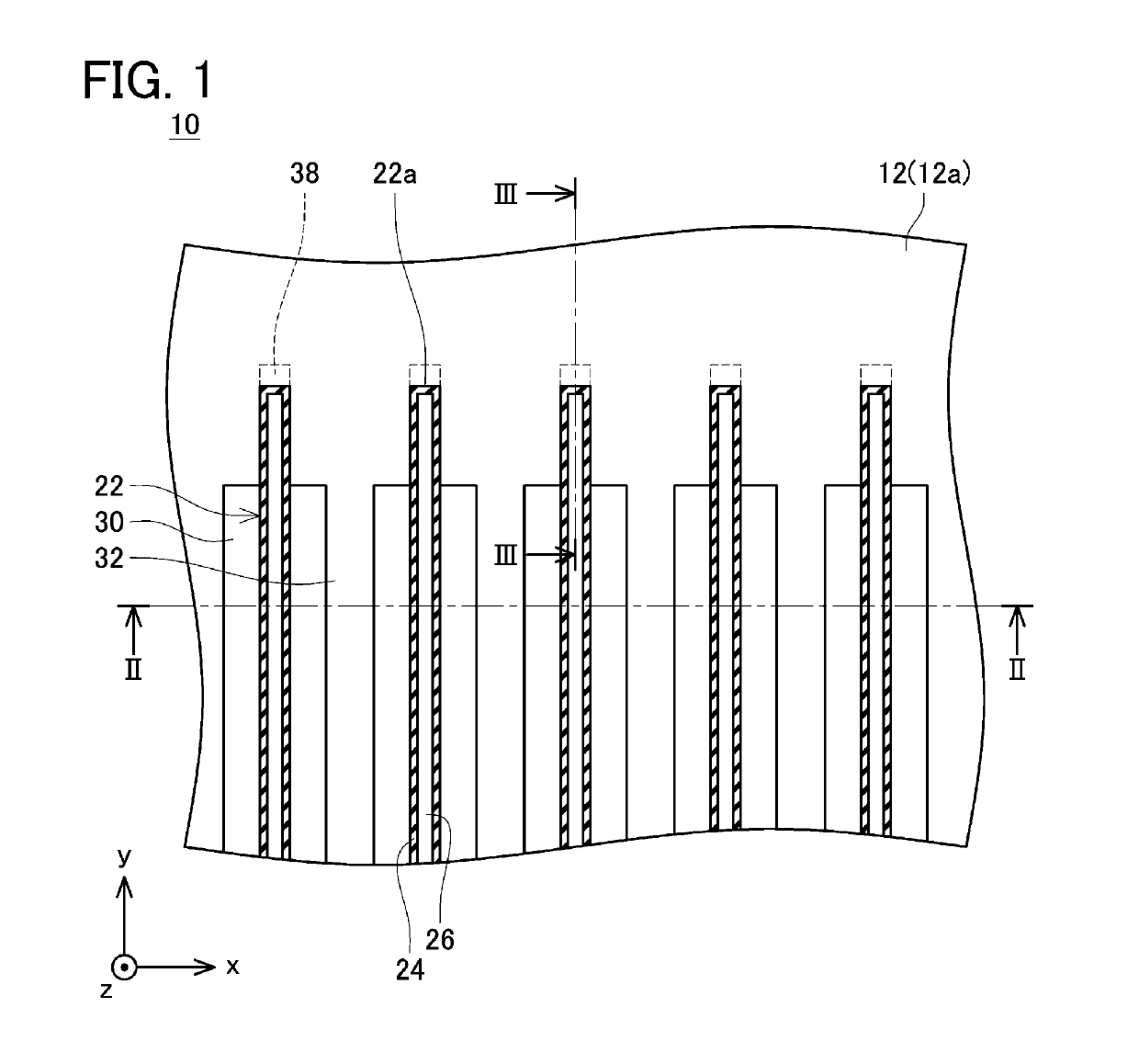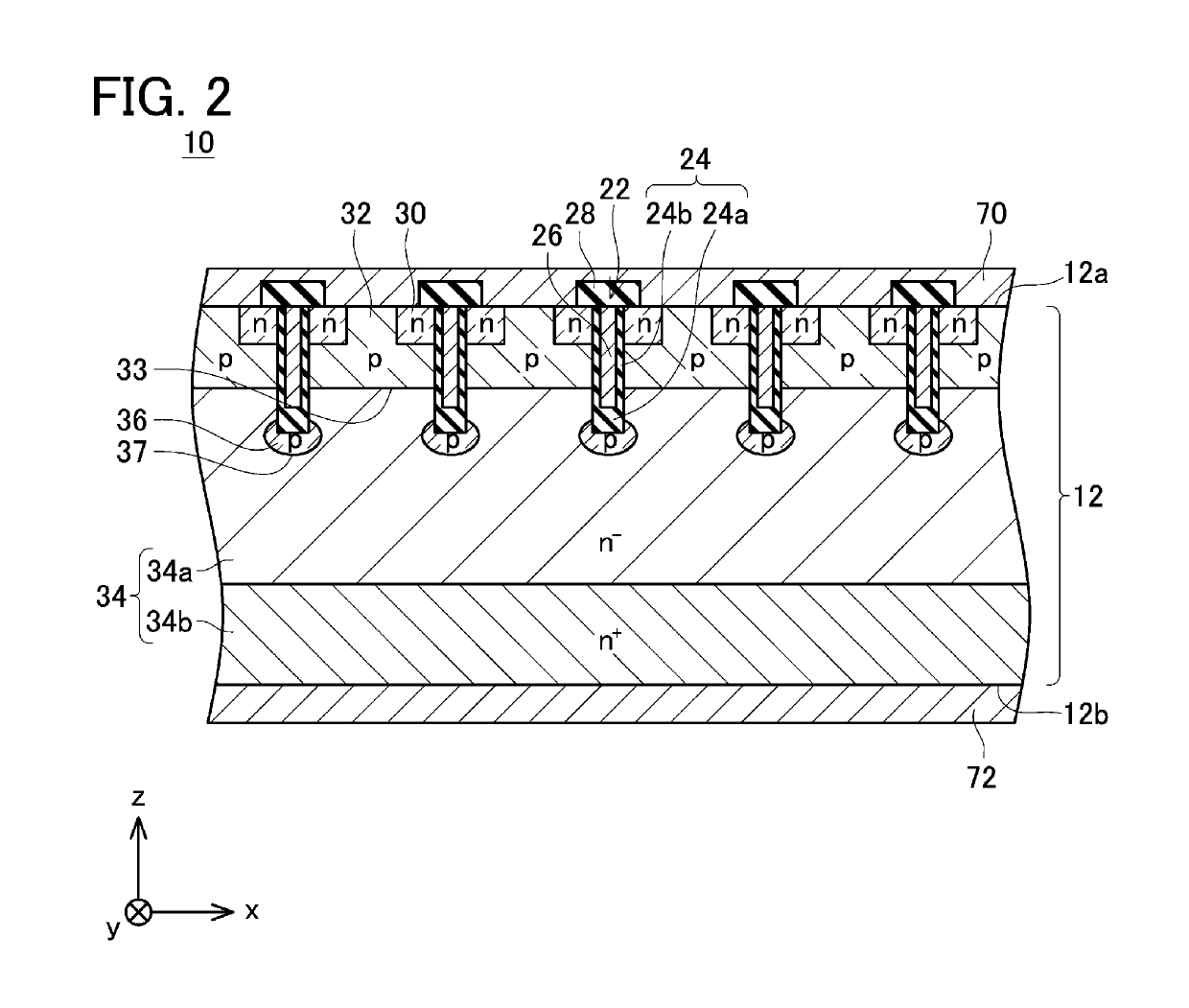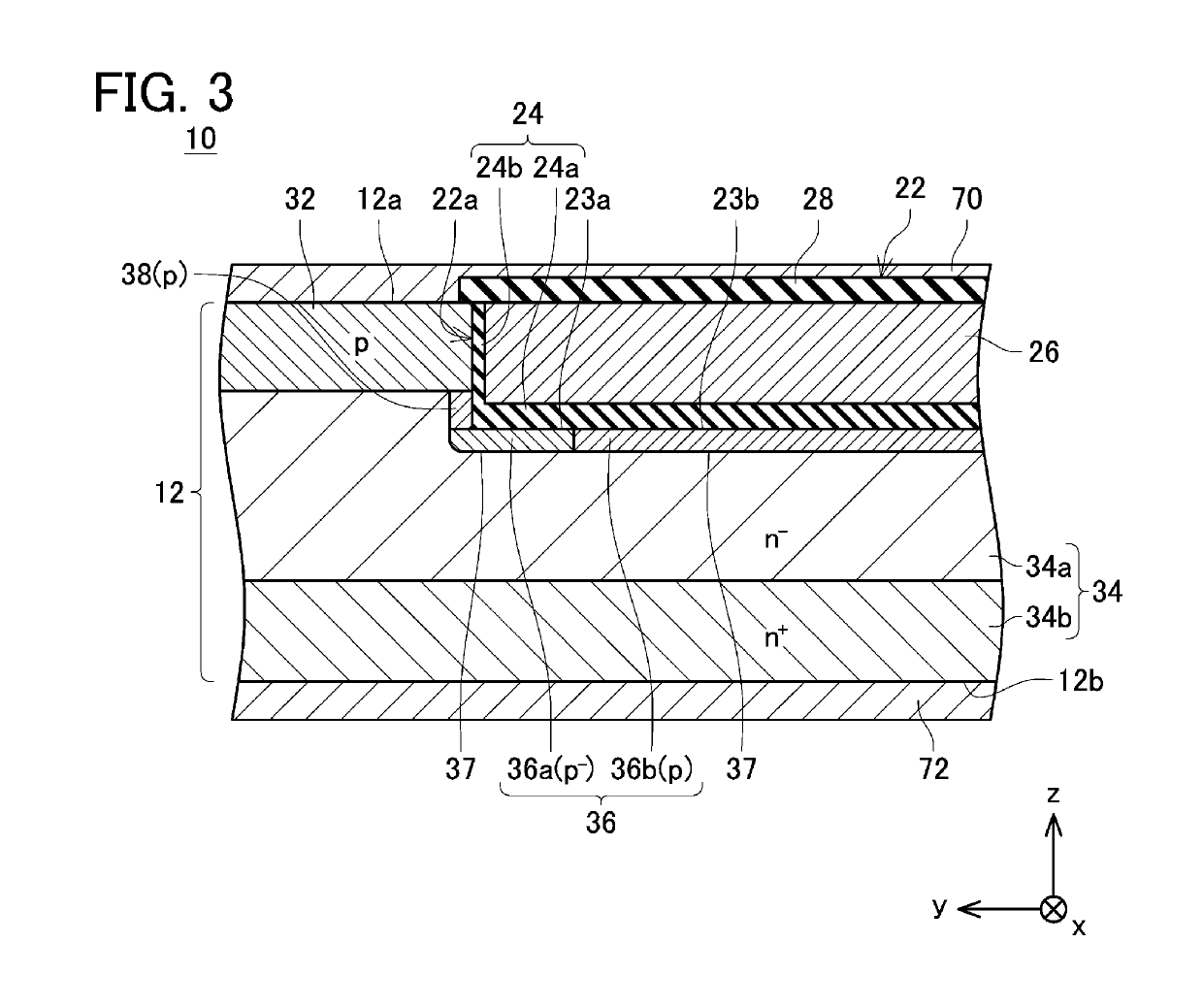Semiconductor switching element
a switching element and semiconductor technology, applied in the field of switching elements, can solve the problems of difficult to alleviate the electric field concentration around the corner of the trench in a long direction, and achieve the effect of high voltage resistan
- Summary
- Abstract
- Description
- Claims
- Application Information
AI Technical Summary
Benefits of technology
Problems solved by technology
Method used
Image
Examples
first embodiment
[0020](First Embodiment)
[0021]FIGS. 1 to 3 show a MOSFET (Metal-Oxide-Semiconductor Field-Effect Transistor) 10 of a first embodiment. As shown in FIGS. 2 and 3, the MOSFET 10 comprises a semiconductor substrate 12, electrodes, insulation layers, and the like. Notably, for a clearer view, FIG. 1 omits depiction of an electrode and insulation layers on an upper surface 12a of the semiconductor substrate 12. Hereinbelow, a direction parallel to the upper surface 12a of the semiconductor substrate 12 will be termed an x direction, a direction parallel to the upper surface 12a of the semiconductor substrate 12 and orthogonally crossing the x direction will be termed a y direction, and a thickness direction of the semiconductor substrate 12 will be termed a z direction. The semiconductor substrate 12 is constituted of SiC (silicon carbide).
[0022]As shown in FIG. 2, the upper surface 12a of the semiconductor substrate 12 is provided with a plurality of trenches 22. As shown in FIG. 1, eac...
second embodiment
[0045](Second Embodiment)
[0046]FIGS. 7 and 8 each show a MOSFET of a second embodiment. In the MOSFET of the second embodiment, the thickness of the high concentration regions 36b is thicker than the thickness of the low concentration regions 36a. That is, each of the low concentration regions 36a extends from the bottom surface of the corresponding trench 22 downward to a first position (position of the lower surface of the low concentration region 36a), and each of the high concentration regions 36b extends from the bottom surface of the corresponding trench 22 to a second position (position of the lower surface of the high concentration region 36b) located lower than the first position. As shown in FIG. 7, in a cross section along the long direction of the trenches 22, the lower surface of each low concentration region 36a extends linearly parallel to the y direction, and the lower surface of each high concentration region 36b extends linearly parallel to the y direction. The low...
PUM
 Login to View More
Login to View More Abstract
Description
Claims
Application Information
 Login to View More
Login to View More - R&D
- Intellectual Property
- Life Sciences
- Materials
- Tech Scout
- Unparalleled Data Quality
- Higher Quality Content
- 60% Fewer Hallucinations
Browse by: Latest US Patents, China's latest patents, Technical Efficacy Thesaurus, Application Domain, Technology Topic, Popular Technical Reports.
© 2025 PatSnap. All rights reserved.Legal|Privacy policy|Modern Slavery Act Transparency Statement|Sitemap|About US| Contact US: help@patsnap.com



